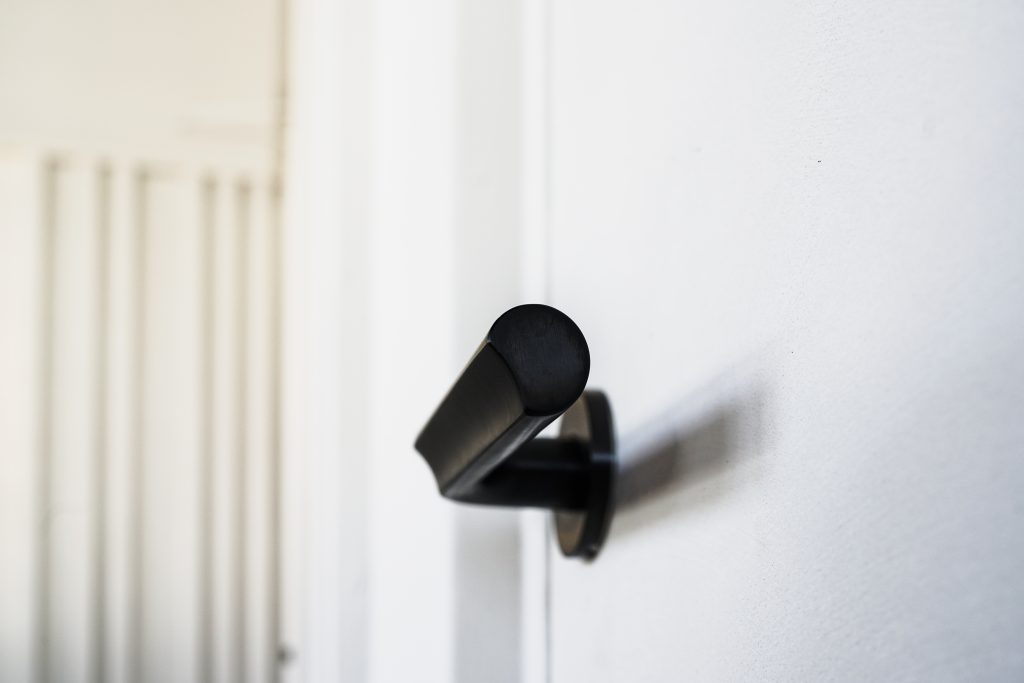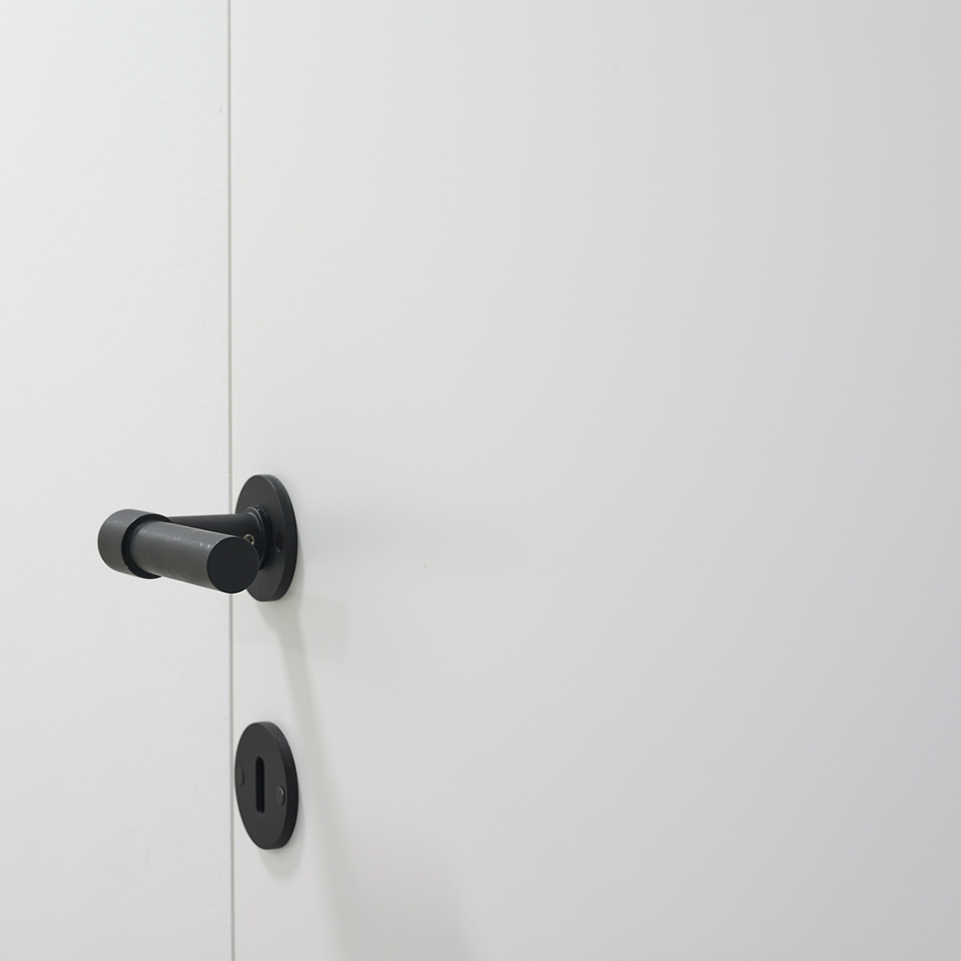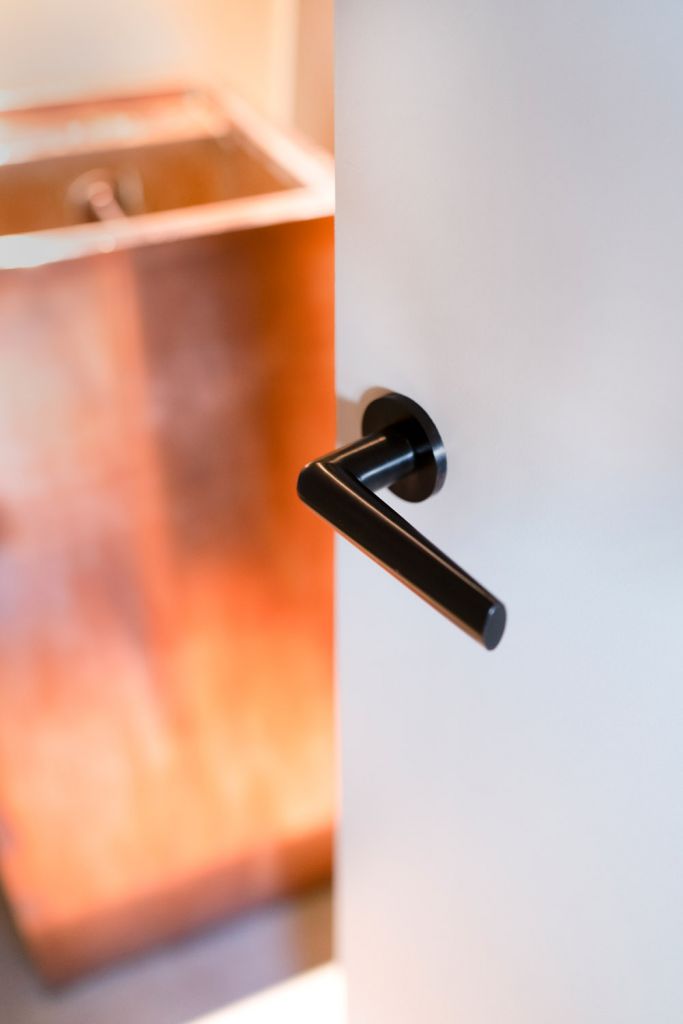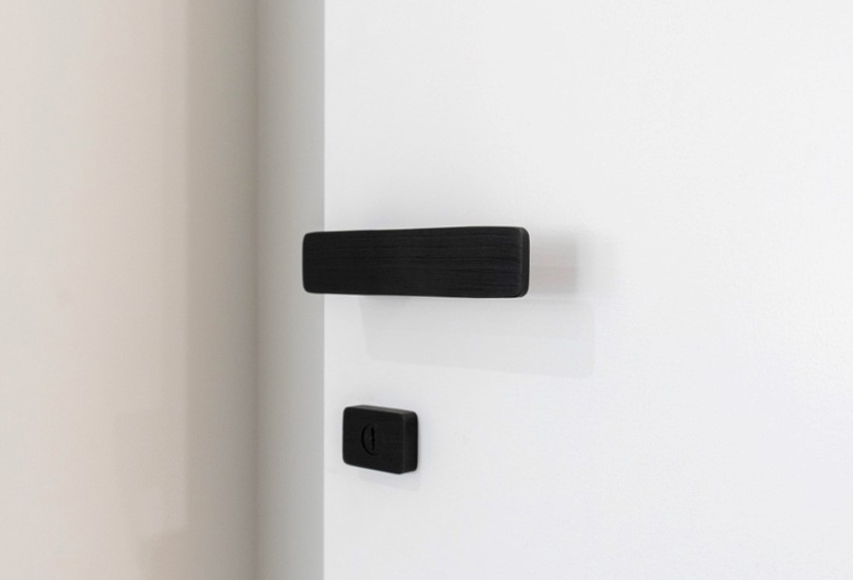PVD / Titanium Coating for Architectural Hardware
What is and when to opt for PVD or PVACD (Titanium) Coating for Architectural Hardware
When choosing architectural hardware like door handles, there are various factors you need to take into account. In addition to selecting the shape you like in the right colour, you can also opt for a PVD coating or PVACD coating or also known as a titanium finish. But what exactly does this entail and when should you choose a PVD coating? Here’s everything you need to know about PVD.
What does PVD coating mean?
PVD stands for Physical Vapour Deposition. During the PVD coating process, a top layer is applied over the base material (stainless steel) of our products by evaporation at temperatures up to 500 degrees Celsius. The PVD finish is ultra-thin but also extremely strong, which results in a top layer that is much harder than the original metal the handle is made from. The PVD layer ensures that our hardware is more resistant to external influences, such as weather, coastal conditions and corrosion, making it an ideal choice for the Australian climate and coastal lifestyle.
PVD Finishes have several benefits:
1. PVD coating extends the lifespan of your handles
When you invest in beautiful architectural hardware, you want it to last. Gone are the days of buying ‘cheap and cheerful’ products for your home that are thrown away after a few years and ending up in landfill. The market demands quality that will last a lifetime. Hello PVD.
Due to the extremely strong PVD top layer, fittings, such as door handles, are highly resistant to corrosion and wear and tear. As a result, the quality is increased and the products have a longer lifespan than any other finish. The strong PVD finish is also more resistant to scratches, although it must be said that no mechanisms, including lever handles, are completely scratch-resistant in the long term.
2. PVD coating is weather resistant and wind resistant
This is perhaps the most important reason for choosing PVD in the Australian climate with our love of the outdoors and coastal living. Here, more than anywhere, architectural hardware for front doors, garden doors, or other exterior doors, is exposed to different weather conditions, such as UV rays, rain, and salty air.
The PVD finish protects the product against these influences and, although no product is completely maintenance-free, the coating ensures less maintenance. Together, this results in an extended life span with your product remaining beautiful for longer. With the concerns of global warming and climate changes always front of mind, weather-resistance is an increasing priority.
3. PVD coating is sustainable and environmentally friendly
In addition to the durable quality of the end product, the PVD process is more environmentally friendly than alternative coating processes. No harmful gases or other substances are released and there is no waste. The process does not affect the recycling value of the stainless-steel base material and it involves using non-toxic and low-impact finishing methods (Low-VOC) for a more eco-conscious product.
What does PVACD (Titanium) coating mean?
PVACD stands for Plasma assisted chemical vapour deposition. In the PACVD (Plasma Assisted Chemical Vapour Deposition) process, the coating grows due to heterogeneous chemical reaction on the surface of the substrate. The reaction substances are supplied in the gas phase. These gases are activated in low temperatures plasma where molecules are dissociated and radicals, ions and excited atoms arise. It decreases the activations energy necessary for the chemical reaction so the reaction temperature can be lower. Moreover, the properties of the growing layer can be controlled by the variation of the plasma parameters. In the PVD (Physical Vapour Deposition) process, the coating grows due to deposition of atoms coming from a solid-state target place in the vacuum recipient walls.
PVACD is double coated and the thin layer of 2 microns have several advantages, which makes it so excpetional:
1. The extroardinary hardness
7 times harder than handles with protective baked enamel
2. High resistance to abrasion and scratching
It can not be damaged / scratched with normal use.
3. Colours and chemical stability
It can not be damaged / scratched with normal use
4. Corrosion Resistance
Quality applied coatings are only slightly microporous, which prevents the penetration of small particles to material of handle and thus the formation of corrosion.

Available PVD colour options at Two Tease
Coloured PVD is now widely used in the world of architecture and interior design overseas, but is still not widely known in Australia. We think it’s time to change that.
At Two Tease Architectural Hardware, our FORMANI PVD colours include:
- PVD Satin Stainless Steel
- PVD Satin Black
- PVD Gunmetal
- PVD Polished Copper
- PVD Satin Gold
The PVD matt stainless steel coating has the same colour and look as stainless steel with a hard top layer of PVD to ensure durability.
Out M&T PVD colours include:
- PVD Bronze (TiN-B)
- PVD Light Gunmental (TiN-C)
- PVD Satin Black (TiN-K)
- Brushed Brass (TiN-A)
Our PVD ranges & collections
At Two Tease Architectural Hardware, the following ranges are available in PVD options: FORMANI ONE by Piet Boon, FORMANI BASICS, FORMANI INC by Piet Boon and FORMANI ARC by Piet Boon.
We welcome you to explore our PVD finishes further either by clicking the links below or see them for yourself in our Artarmon showroom.
Explore FORMANI ONE by Piet Boon
Explore FORMANI BASICS
Explore Formani INC by Piet Boon
Explore Formani ARC by Piet Boon
Across all our collections in M&T, our products come in the PVD finishes of: PVD Bronze (TiN-B), PVD Light Gunmetal (TiN-C), PVD Satin Black (TiN-K) and Brushed Brass (TiN-A).
Need PVD door fittings?
The PVD technology represents an enormous leap forward in terms of quality, eliminating many problems. This goes hand in hand with a slightly higher price. However, the price-quality ratio is significantly improved due to the extended lifespan.
Whether PVD coating for door fittings, window fittings, or furniture fittings is the best choice often depends on the project. For outdoor use, we generally recommend PVD coating, especially when the fittings are used in architecture or interior projects on the coast. This also applies to projects in which the fittings are frequently touched, such as healthcare, hospitality, and other utility projects.
Related Articles:
—
> Piet Boon x Formani: The Collaboration
>Installing European door handles? What you need to know…





















